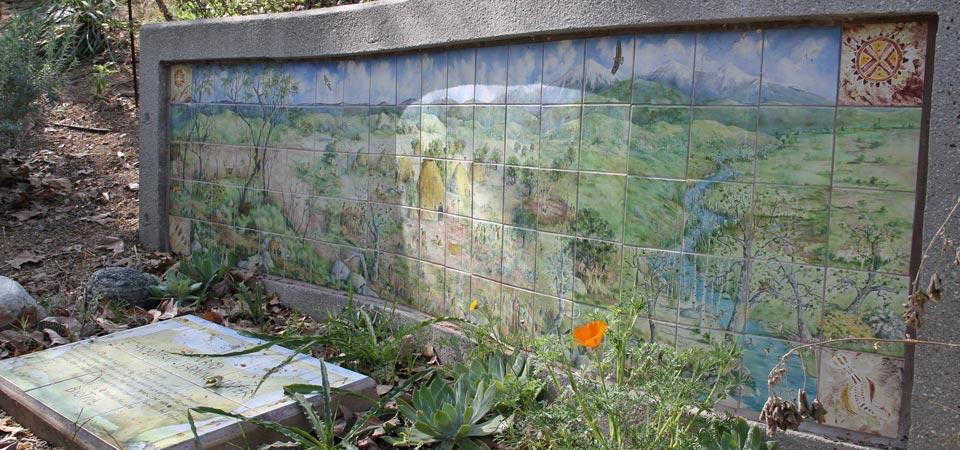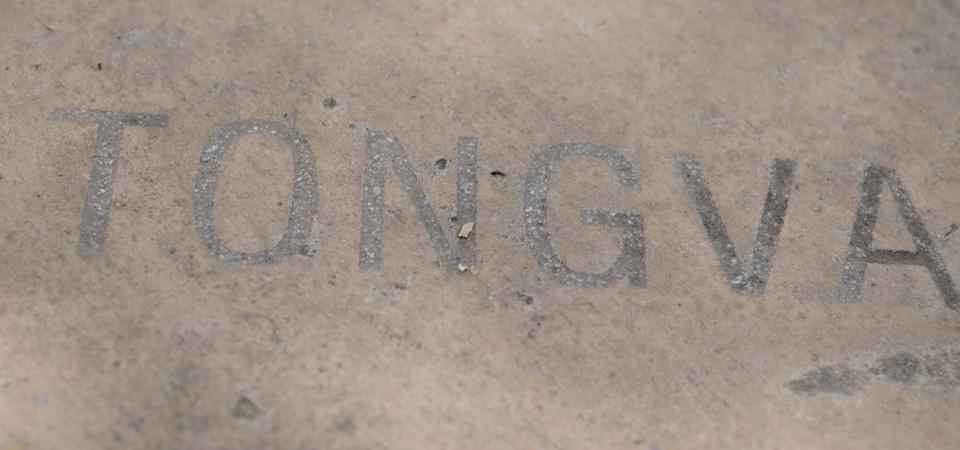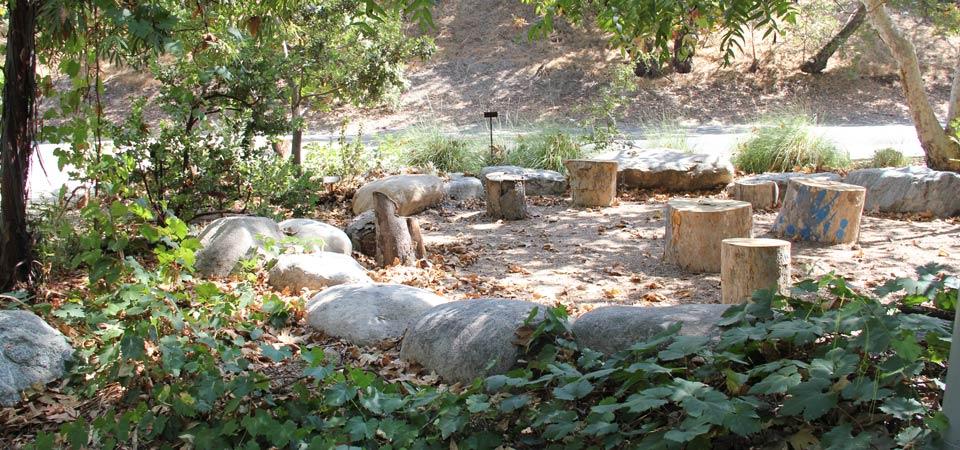Ethnobotany: Linking Past to Present
Come walk the paths of Aasuingna, the “place of the plants.” The indigenous people of Los Angeles have no word in their language for “garden”—before European settlement, their entire world might have seemed to us a garden, and the plants their pantry, their construction yard, their fabric store, and their medicine cabinet.
Before colonization by the Spanish, the indigenous people of the Los Angeles Basin “maintained the land”, creating conditions of great biological diversity and abundant food, including acorns, other plant foods, seafood, and game animals. Unfortunately, the people were introduced to European culture and disease. In the years afterwards, their culture declined and then collapsed. The abundant natural resources available to hunter-gatherers have been supplanted by agriculture and food importation in the multicultural society of today. But the people remain, and they are now reclaiming their ancestral culture. In this garden live the plants of the indigenous world, which is our world too, unless we fail to maintain the land.
There are over 200 different species of plants in Aasuíngna, from California and the surrounding regions. Almost all of these plants have been used by the local indigenous people, and many are ecological dominants in their native range. Many of the medicinal uses recorded by ethnobotanists are not well-established. But the indigenous people know what many have forgotten, that plants also heal the spirit.
There are also other dwellers among the plants - Aasuínviam. These are the animals that have come on their own to Aasuíngna, because it’s the sort of place they can call home.
Village Gathering Circle
A central feature of many native villages was the yovár, a ceremonial circle surrounded by a willow-stake fence, a place for meeting and ritual. Our circle differs from the traditional yovár in being surrounded by boulders, but it serves the same function: a place to come together.
Acorn Grinding Area/Bedrock Mortars
Although the indigenous California past was a world of abundance, acorns meant life—they completed every meal, filled in when other foods were in short supply, and when the acorns failed year after year, the people suffered.
The Oak Grove is home to a number of species of California oaks, some of their associated flora, and several giant boulders that are used by visitors to grind acorns, mesquite pods, beans, and other foods in the same manner as those who came before. With repeated use, over years, our boulders will develop the same worn depressions found in ancient grinding stones across the state.
Mural
Depicted in a tile mural at the heart of the Ethnobotany Garden is the southern California landscape as it existed more than 1000 years ago.


